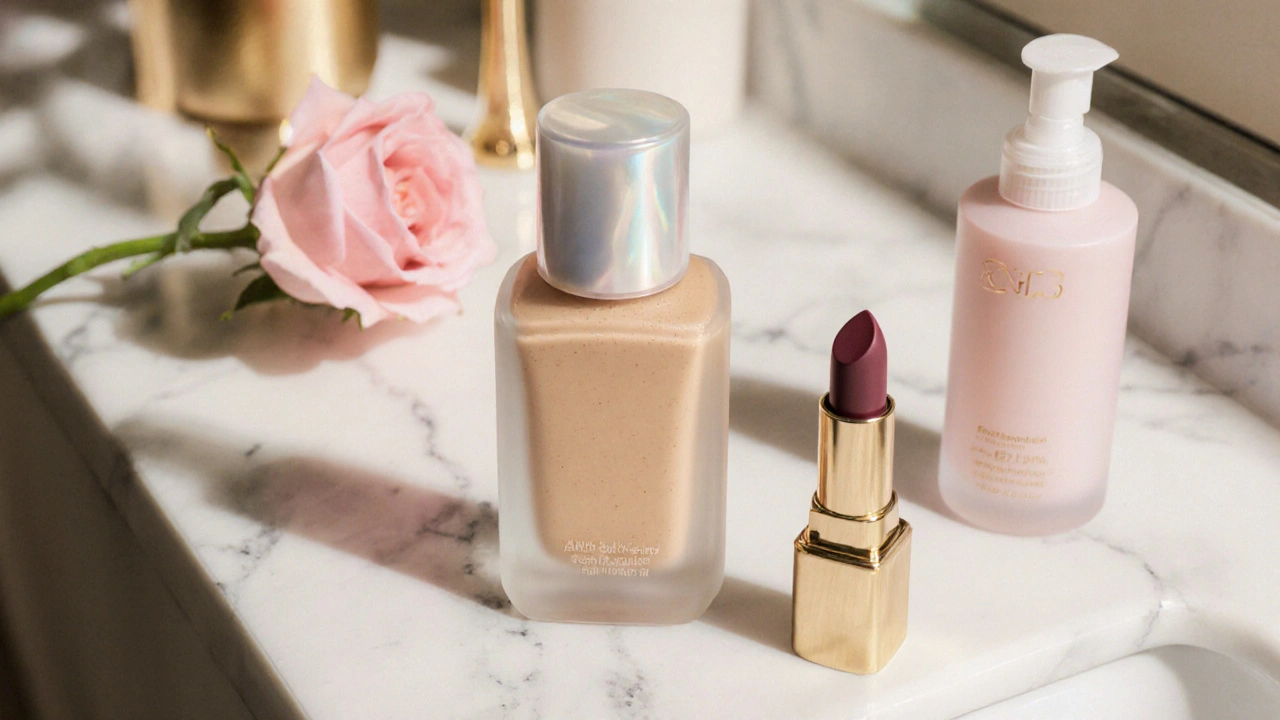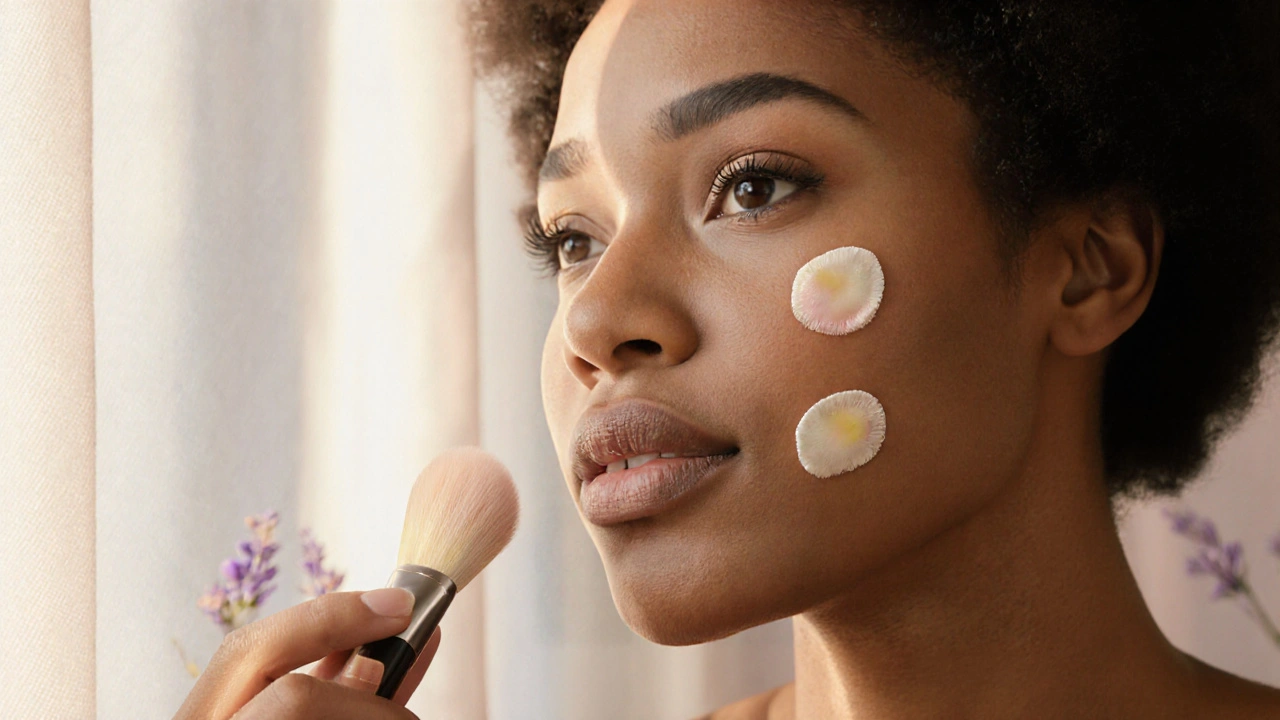When your lips feel like sandpaper and your cheeks are tight, the last thing you want is a makeup routine that makes the problem worse. The good news? The right products and a few smart steps can turn a flaky face into a smooth canvas without hiding the natural glow you love.
Quick Takeaways
- Prep skin with a gentle cleanser, layered moisturiser and a hydrating primer.
- Choose water‑based, breathable foundations that contain humectants.
- Use lightweight, cream‑based concealers and avoid heavy powders.
- Finish with a dewy setting spray instead of a matte powder.
- Keep lips moisturised and opt for balm‑infused lip colours.
What Makes Skin Chapped?
Chapped skin isn’t just a winter‑time nuisance; it can show up any season when the skin‑barrier is compromised. Common culprits include low humidity, harsh soaps, over‑exfoliation, and even certain medications that strip natural oils. When the barrier is broken, transepidermal water loss spikes, leaving the skin feeling rough, tight and prone to redness.
First Step: Skincare Before Makeup
Think of makeup as a dress-you won’t look great if you skip the under‑garments. A solid skincare foundation protects and plumps the skin, giving makeup a smoother surface to cling to.
Moisturiser is a hydrating emulsion that seals in water and repairs the lipid barrier. Look for ingredients like ceramides, hyaluronic acid, and glycerin. Apply a pea‑sized amount while the skin is still damp from cleansing to lock in moisture.
Next, layer a hydrating primer that contains panthenol, squalane, or aloe vera. This creates a slip surface so foundation glides on without tugging at the delicate skin.
If you spend time outdoors, a broad‑spectrum sunscreen with at least SPF 30 is non‑negotiable. Choose a mineral formula with zinc oxide or titanium dioxide; these are less likely to irritate already sensitive skin.
Choosing a Foundation That Won’t Dry You Out
Foundation is the biggest culprit for accentuating dry patches. The key is to pick a formula that adds moisture instead of sucking it away.
Hydrating foundation is a light‑to‑medium coverage liquid that blends skin‑care actives like hyaluronic acid directly into the formula. Brands often label these as “dewy”, “moisturising”, or “hydrating”.
- Liquid water‑based foundations - Ideal for normal‑to‑dry skin; they spread easily and stay flexible.
- Cream foundations - Offer richer coverage and extra emollients, perfect for very flaky areas.
- Tinted moisturisers - Give a sheer wash of colour while delivering a burst of hydration.
When testing a shade, swipe a small amount onto the jawline and blend. The colour should disappear into the skin within seconds, leaving no powdery residue.
Concealer: Light‑Touch Coverage
Heavy, cakey concealers can crack on top of chapped spots. Opt for cream‑based options that contain a touch of silicone for slip but remain moisturising.
A good rule of thumb: apply concealer after foundation, using a dab‑and‑blend technique with a soft brush or fingertip. Tap gently instead of scrubbing to avoid further irritation.
Powders and Setting: Keep It Dewy
Traditional mattifying powders are a no‑go for dry skin; they cling to flakes and make the texture more obvious. Instead, reach for a translucent, finely milled setting spray or a light‑touch mineral powder with added silica.
Setting powder that contains micronised rice starch or silk proteins can absorb excess shine without drying out the skin.
Apply with a fluffy brush in a sweeping motion, focusing on the T‑zone. Finish with a spritz of dewy setting spray to lock everything in place.

Lips: The Final Flourish
Chapped lips need extra love. Use a lip balm infused with shea butter, beeswax, or oat extract before any colour. Then pick a lip product that doubles as a balm.
Lipstick with hydrating ingredients like vitamin E or jojoba oil delivers colour without peeling. If you prefer a glossy look, a tinted lip gloss with hyaluronic acid adds shine and a moisture boost.
Application Tricks to Keep Flakiness at Bay
- Use a damp beauty sponge for foundation; the moisture helps melt the product into the skin.
- Layer thinly - multiple light coats look more natural than one heavy one.
- Set with a cool mist sprayer; the temperature helps seal the formula.
- Avoid rubbing; tap or press products in instead.
- Re‑hydrate throughout the day with a mini facial mist.
Common Mistakes and How to Fix Them
Mistake 1: Using a matte foundation on dry skin. Fix: Switch to a dewy or cream‑based formula and add a hydrating primer.
Mistake 2: Skipping sunscreen because it feels heavy. Fix: Opt for a lightweight mineral sunscreen that blends like a serum.
Mistake 3: Applying powder over lips. Fix: Keep powder away from the lip line; use a brush to contour only the surrounding skin.
Product Comparison: Foundations for Chapped Skin
| Brand | Type | Key Hydrating Ingredient | Coverage | Finish |
|---|---|---|---|---|
| GlowSkin | Liquid | Hyaluronic Acid | Medium | Dewy |
| SilkVeil | Cream | Squalane | Full | Soft Matte‑Dew |
| PureTint | Tinted Moisturiser | Glycerin | Sheer | Natural |
| FreshAura | Liquid | Panthenol | Medium | Radiant |
Putting It All Together: A Sample Routine
- Cleanse with a gentle, sulfate‑free foaming wash.
- Pat dry and apply a hydrating serum (optional).
- Layer a lightweight moisturiser with ceramides.
- Spread a thin film of hydrating primer over the entire face.
- Use a damp beauty sponge to dab on a hydrating foundation.
- Conceal any red patches with a cream concealer, tapping gently.
- Set the T‑zone with a translucent, silk‑protein powder.
- Finish with a dewy setting spray for a fresh‑look lock‑in.
- Prep lips with a nourishing balm, then swipe a balm‑infused lipstick.
Follow this routine and you’ll notice less tightness, a smoother texture, and a natural glow that lasts all day.
Frequently Asked Questions
Can I wear matte foundation if I have chapped skin?
Matte foundations tend to amplify dryness because they contain more powders. If you love the matte look, opt for a hybrid formula that mixes a dewy base with a lightweight mattifying powder applied only where shine appears.
How often should I exfoliate when my skin is chapped?
Limit exfoliation to once a week with a gentle enzyme scrub. Over‑exfoliating strips the barrier further and makes makeup sit unevenly.
Is setting spray necessary?
A light mist helps fuse the layers and adds a subtle dewy finish, which masks any remaining texture. It’s especially useful in dry climates or air‑conditioned rooms.
What ingredients should I avoid in foundation?
Steer clear of alcohol‑heavy formulas, fragrance, and high concentrations of silica or talc, as they can draw moisture out of the skin.
Can I use the same products year‑round?
Your core routine (cleanser, moisturiser, primer) can stay the same, but you may switch to a lighter foundation in humid summer months and a richer cream in winter.


Alexa Ara
Okay but this guide is literally life-changing. I’ve been using matte foundation for years and my cheeks looked like a cracked desert by noon. Switched to GlowSkin with a damp sponge and now I look like I slept for 8 hours even when I didn’t. Thank you for writing this.
Also, the lip balm + tinted balm trick? Game. Changed. My lips haven’t felt this soft since 2019.
PS: You’re not weird for using a facial mist at your desk. Do it. No regrets.